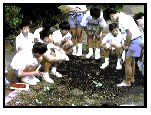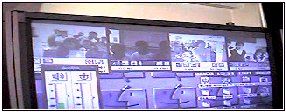 Talk about
the Internet and computer networking is very common these days, with simultaneous
lessons conducted using teleconferencing systems and satellites. Effective
use of these tools in education can change the way children learn—otherwise,
the Internet for education is no better than any other passing fad.
Talk about
the Internet and computer networking is very common these days, with simultaneous
lessons conducted using teleconferencing systems and satellites. Effective
use of these tools in education can change the way children learn—otherwise,
the Internet for education is no better than any other passing fad.We need to teach children with a better idea of what we can actually do for them, because they are our future.
 Using computer
networks, I believe we can offer children new ways of learning. One of them
is learning by forming relations by others they wouldn't otherwise meet. Using
a networking system, children can meet many different kinds of people. Children
have the opportunity to improve their skills, using the diversified human
resources they will need to live in the computerized society of the future.
Using networks, each child can collect and send information. They can maximize
their potential by repeating the process of collecting, processing, and sending
information, spanning the globe and transcending time. Teaching materials
that give children scope to collaborate in their work should be developed
for use in lessons involving networking systems. These materials help in cultivating
their intelligence and in improving their lives. In the perfect environment
for collaboration, children would be able to share their feelings, stimulate
each other's minds, and create together harmoniously.
Using computer
networks, I believe we can offer children new ways of learning. One of them
is learning by forming relations by others they wouldn't otherwise meet. Using
a networking system, children can meet many different kinds of people. Children
have the opportunity to improve their skills, using the diversified human
resources they will need to live in the computerized society of the future.
Using networks, each child can collect and send information. They can maximize
their potential by repeating the process of collecting, processing, and sending
information, spanning the globe and transcending time. Teaching materials
that give children scope to collaborate in their work should be developed
for use in lessons involving networking systems. These materials help in cultivating
their intelligence and in improving their lives. In the perfect environment
for collaboration, children would be able to share their feelings, stimulate
each other's minds, and create together harmoniously.




 Conference to introduce results from the 100-School Networking Project (Phase II)
Conference to introduce results from the 100-School Networking Project (Phase II)